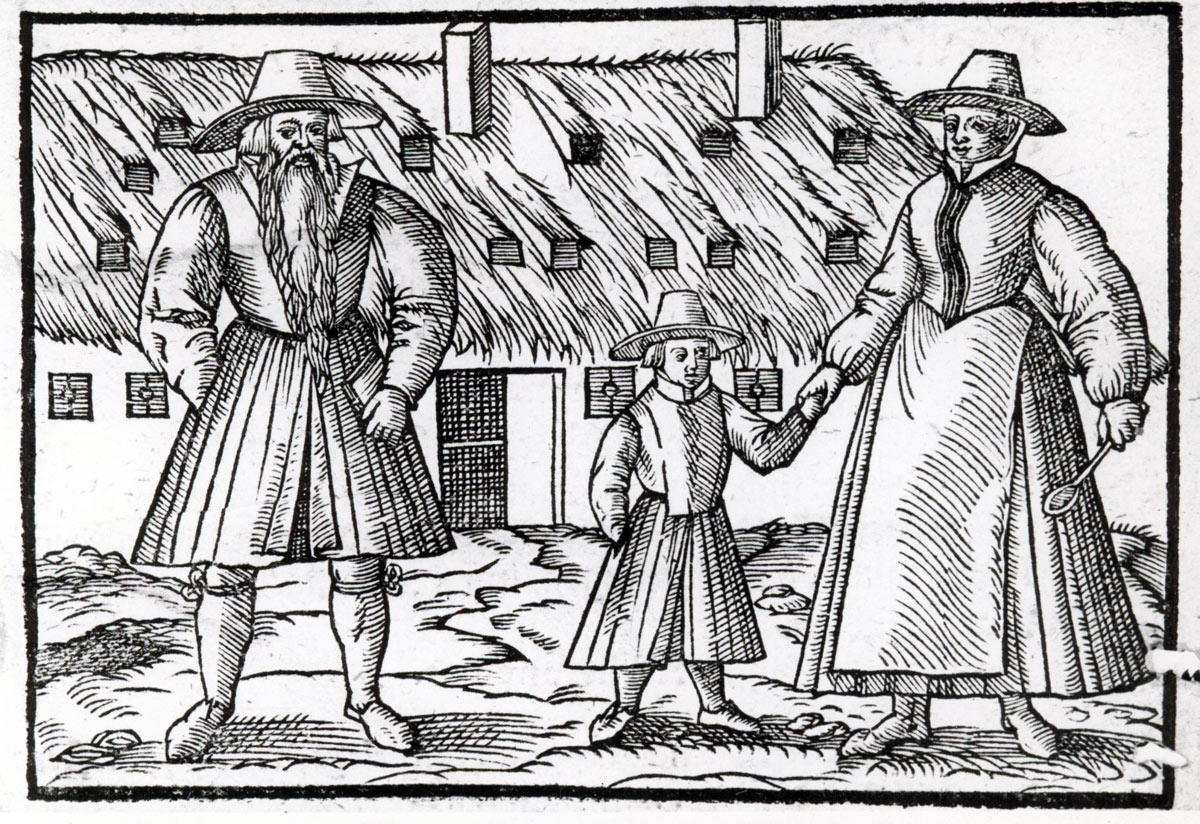 |
| Execution of two Mennonites in the Netherlands; they were strangled, held over a fire, then killed with a pitchfork. |
The story of the persecution of the Mennonites in the land of their origin, the Swiss Republic, supposedly the home of religious toleration, was the most bitter and the most disgraceful in all the annals of Europe. They were relentlessly attacked by both State and Church for nearly three hundred years. The death penalty was inflicted until well within the seventeenth century; they were condemned to serve as galley slaves as late as the eighteenth century; and were left to rot in filthy prisons, and banished to foreign lands up to the beginning of the nineteenth century. (Smith 1920, 83)
As a result of this persecution, which was particularly fierce in the Zurich area, many Anabaptists fled to more tolerant locations. A favored destination was Moravia, then part of the Kingdom of Bohemia. Although Bohemia was ruled by the staunch Catholic Archduke Ferdinand of Habsburg (beginning in 1556, Holy Roman Emperor Ferdinand I), the lords of the manor cities were the real power on the local level, and they generally had little interest in persecuting otherwise industrious subjects.
 |
| Moravia (dark green) within the context of today’s Czech Republic (dark gray) and the surrounding nations. |
The Hutterites adhered to all of the typical Anabaptist beliefs—adult baptism of believers, nonviolence, and separation from the world—but also practiced a community of goods, giving up their claims to private ownership and holding all possessions in common. To that end, Hutterites were organized into Bruderhofs (farm colonies). Friedmann writes:
Bruderhofs were quite elaborate establishments consisting as a rule of several larger and smaller houses…, usually around a village common or square. The ground floor of the buildings was used for community living: dining hall, kitchen, and rooms for nursery, school, laundry, spinning, weaving, and sewing, and also for maternity rooms. The roofs (thatch mixed with clay to make them fireproof, a much-discussed invention of the Brethren) were high and steep so that the attics contained two stories of small chambers (Stuben, Oertel) where the married couples lived with their small children.
By the beginning of the seventeenth century, there were around one hundred Bruderhofs scattered across Moravia, although they were clustered most densely around the city of Nikolsburg.
So why this long excursus on Moravia and the Hutterites? Because Heinrich Bühler did not simply emigrate to Moravia to live alongside the Hutterites and other Anabaptists. According to the account of his imprisonment in The Chronicle of the Hutterian Brethren (see here), Heinrich was a Hutterite who returned to Zurich from Moravia in 1614 to claim his inheritance.
We will probably never know when Heinrich became a Hutterite—Was he won over by Hutterian missionaries to the Zurich area, or did he flee Brüttisellen for Moravia on his own and join the Hutterites after encountering them there?—or where exactly in Moravia Heinrich lived, but we can have a good sense of his life while he was there.
He no doubt lived in a Bruderhof along with his wife and children and alongside his Hutterite brothers and sisters. He dined with them, worked with them, and worshiped with them. In short, he became a part of the Bruderhof community. That community life was short-lived, however, and it was not too many years before Heinrich had to pick up and move his family to a safer locale once again. That is a story for another post, but before that we should stop and look around a bit at the area of Moravia in which Heinrich may have lived, which will be the subject of the next post in the series.
Sources
Friedmann, Robert. 1953. Bruderhof. Global Anabaptist Mennonite Encyclopedia Online.
Smith, C. Henry. 1920. The Mennonites: A Brief History of Their Origin and Later Development in Both Europe and America. Berne, IN: Mennonite Book Concern. Available online here.


No comments:
Post a Comment